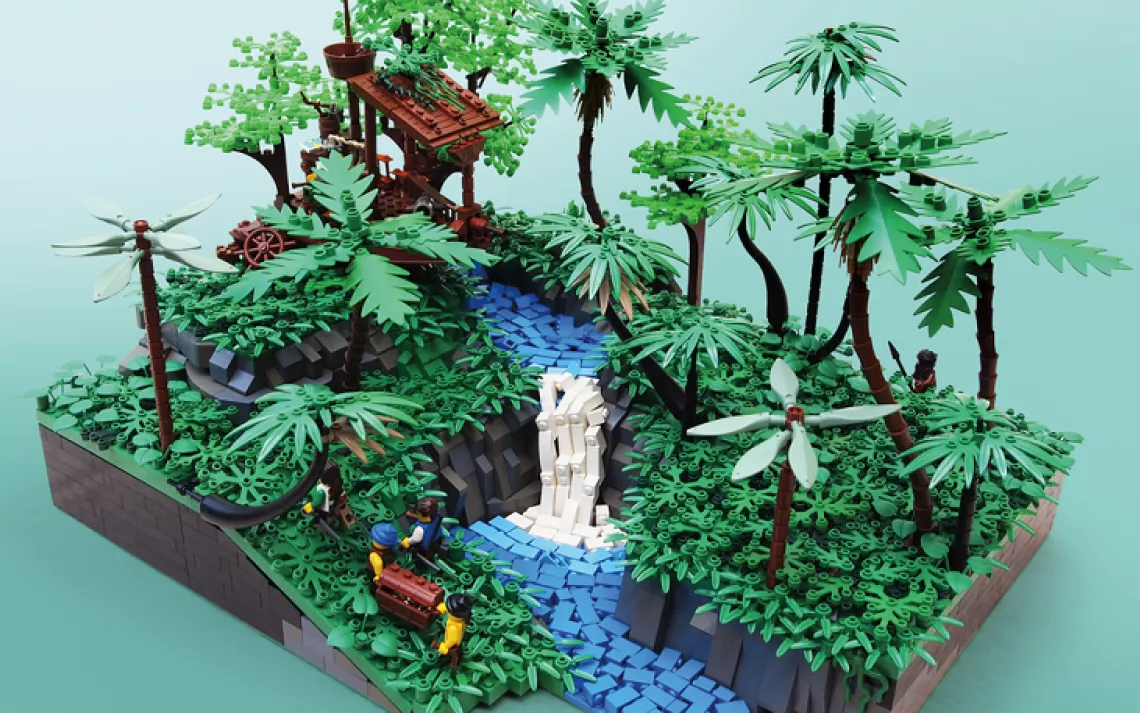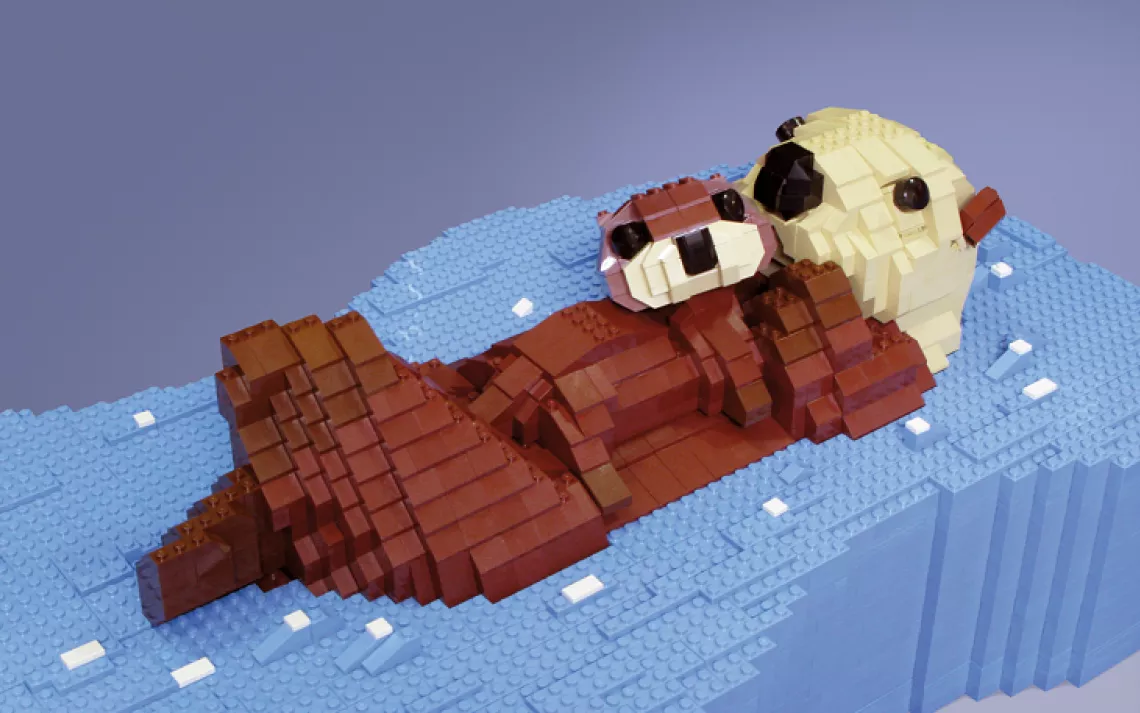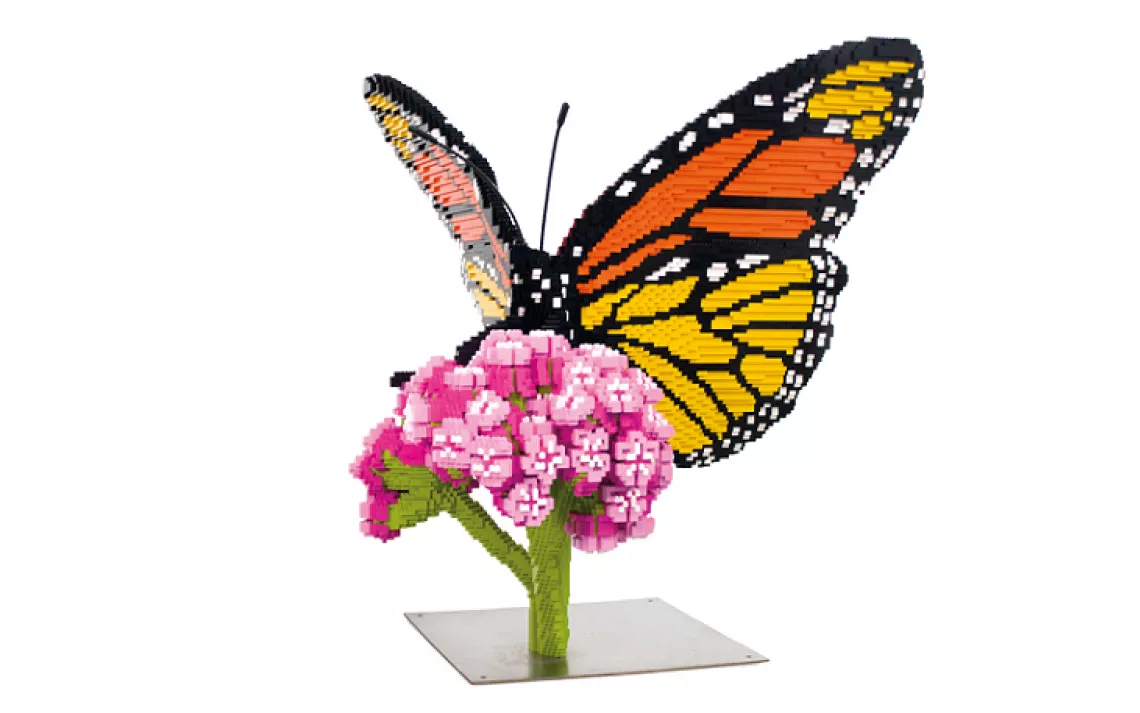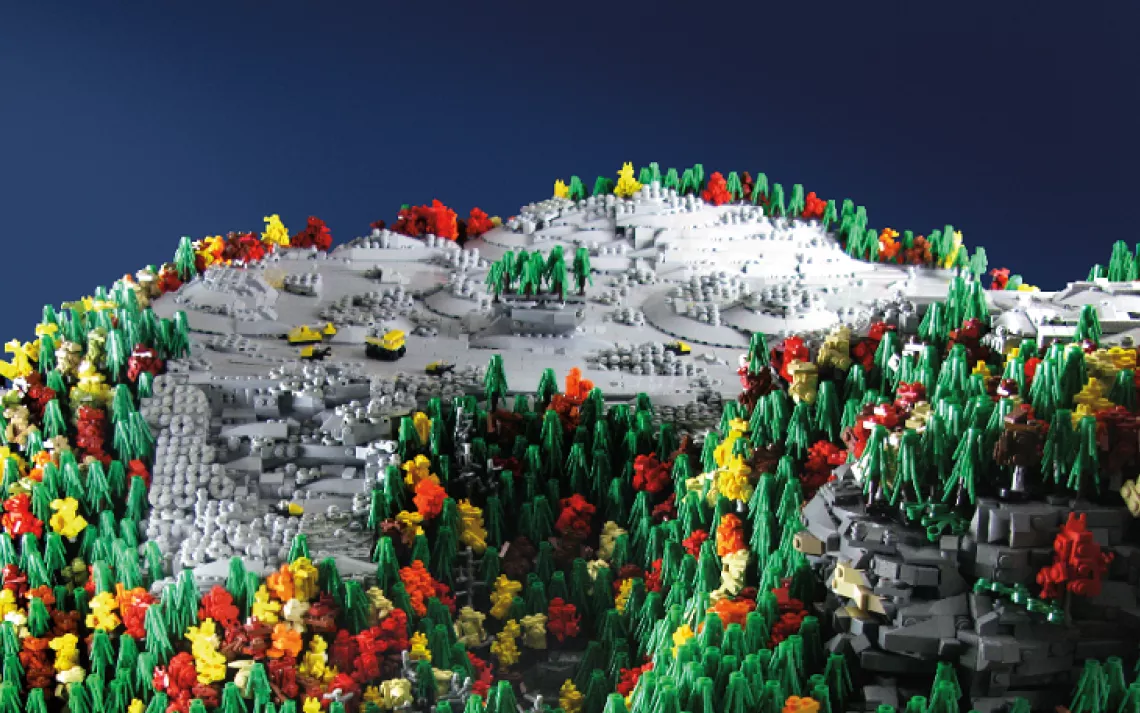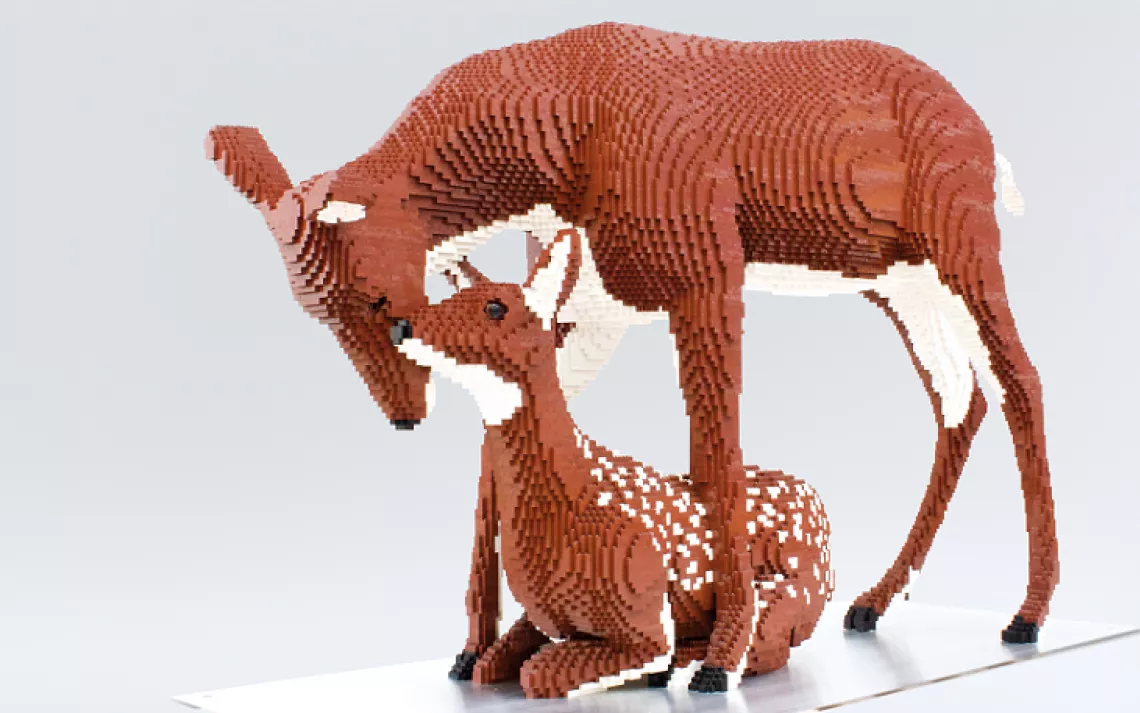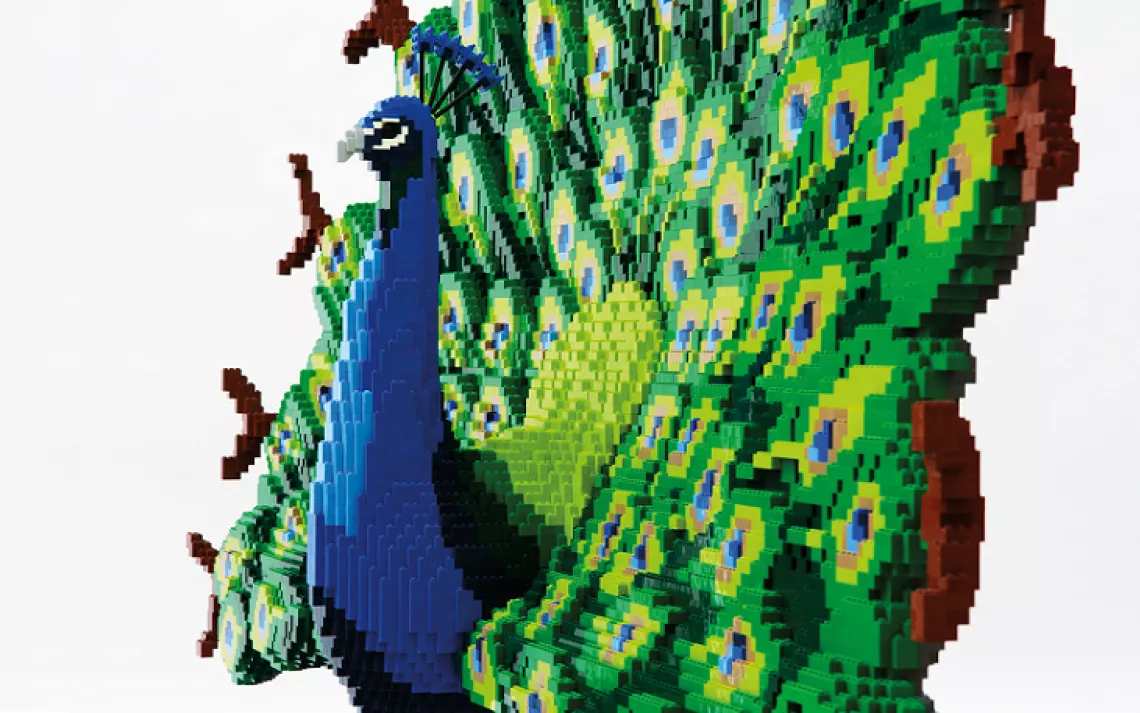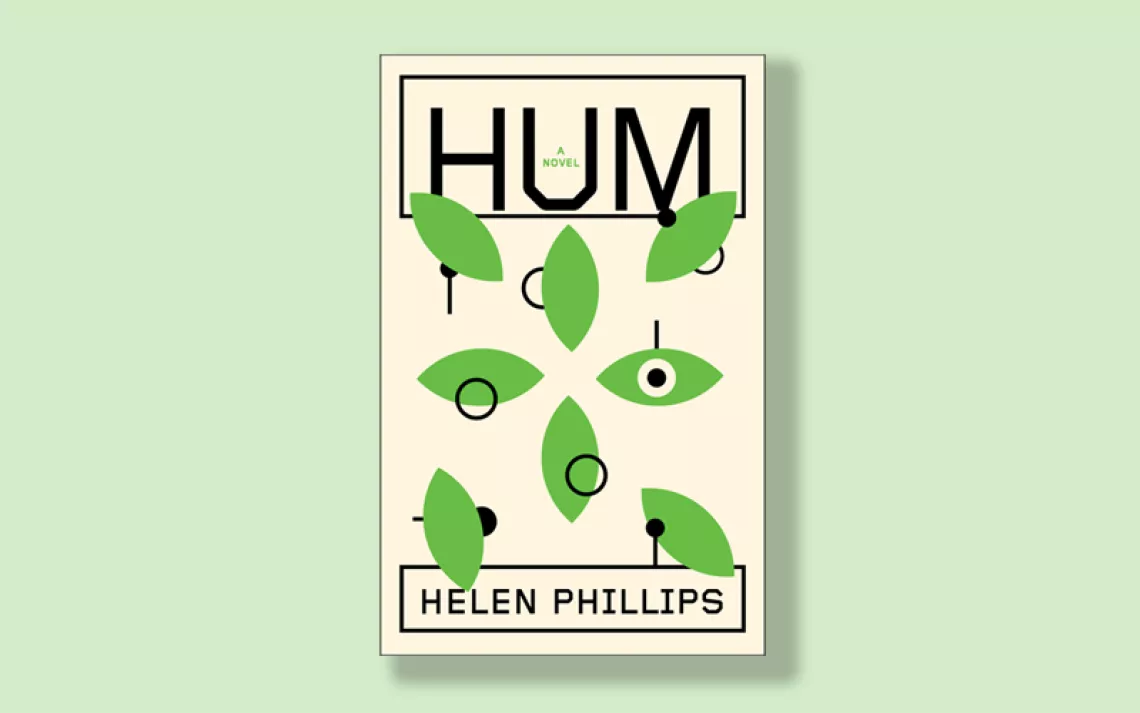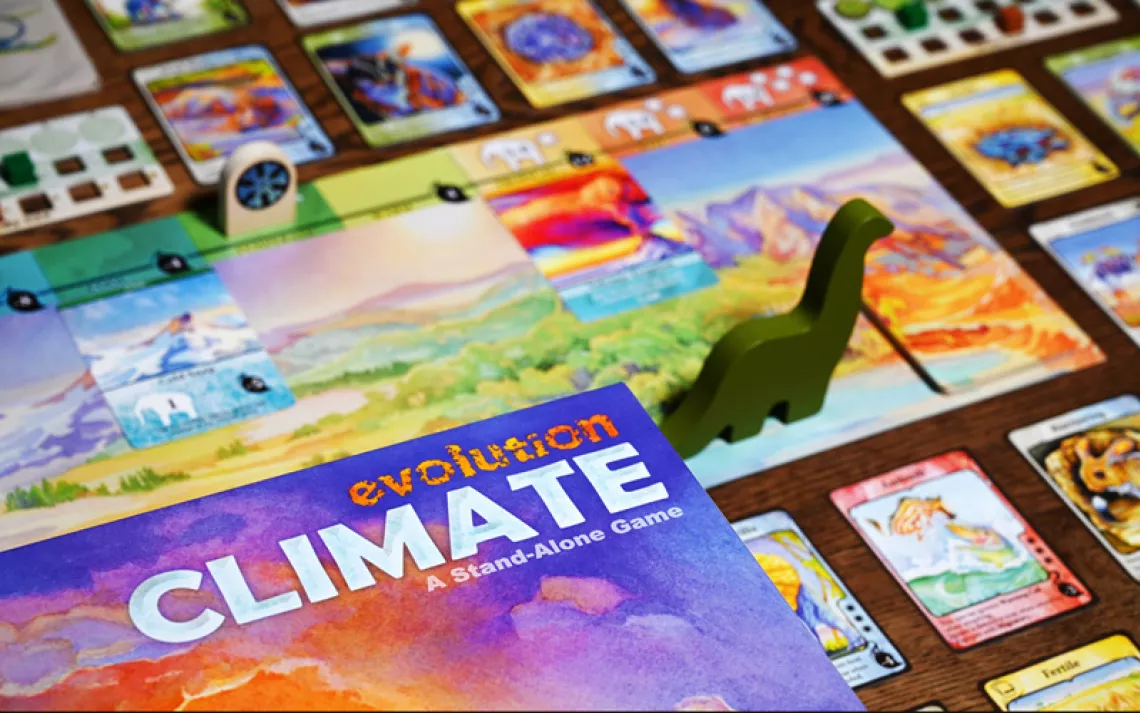Everything is Awesome in "Beautiful Lego: Wild"
Curator Mike Doyle's third book of Lego art collections celebrates the interconnectedness of nature and Lego
Images courtesy of No Starch Press
If you’re an eco-minded parent, you probably have mixed feelings about Lego. On the one hand, those piles of colorful bricks seem like the perfect antidote to too much screen time—an old-school kind of play that's good for kids, like climbing trees and playing board games.
On the other hand, the 60 billion plastic bricks the Lego Group produces annually to fuel all that innocent fun are a big environmental buzzkill. In June, the Danish company announced that it would begin an intensive effort to find an ecofriendly replacement for the petroleum-based plastic it uses, with the goal of phasing it out by 2030. On its website, Lego lists other steps toward sustainability and posted this statement:
We believe that the skills fostered by playing with Lego bricks, such as having fun, being creative and using analytical thinking, are some of the very same skills that are needed to tackle complex environmental issues.
It would be easy to write this off as corporate spin, but after looking through Mike Doyle’s latest book in the Beautiful Lego series, Beautiful Lego: Wild, you might find yourself agreeing. This collection of Lego art displays the creative, analytical thinking the company is describing. The featured artists clearly chucked the instruction booklets long ago and are inventing exciting new forms with this age-old toy.
Like all good art, the sculptures in Beautiful Lego: Wild help us appreciate the beauty of what they represent, in this case, mostly elements of the natural world. It might seem counterintuitive to celebrate nature through the artifice of plastic bricks, but Sean Kenney, an artist who installs Lego sculptures in arboretums and botanical gardens around the world, doesn’t see it that way. In a chapter devoted to his work, he writes, “Much as Lego pieces interconnect, all of nature is connected in an intricate balance.”
The sculptures in Beautiful Lego: Wild run the gamut from trees, flowers, and animals (there’s a whole chapter on wildlife that includes a 3,500-piece sea otter mother and pup by Sachiko Akinaga) to disasters—natural and otherwise (there’s the 300-piece Fukushima by Lego artist Pascal Schmidt and a 10,000-piece sculpture by Mike Doyle titled Appalachian Mountaintop Removal). Birds take up another chapter, which includes a series by Tom Poulsom, whose bird concept has been turned into an official Lego set. A few chapters that stretch the nature theme, like Beasts and Artificial Life, are thrown in for good fun.
The creations range dramatically in size and scale. Sean Kenney’s intricately crafted Monarch Butterfly is composed of 60,549 pieces, while the ingeniously simple Venus Fly Trap by Kristi McWhorter has only 11.
Beautiful Lego: Wild is both a product and celebration of the Lego phenomenon, which could never have been predicted by its founder, Ole Kirk Christiansen, when he started making the bricks out of wood in 1932.The ubiquitous toy has even spawned its own documentary, Beyond the Brick: A Brickumentary, released in the United States last July. Reflecting on Lego’s incredible success, filmmaker Daniel Junge said in an interview, “It really makes you question whether at its core it's a toy or something greater.”
Look through Beautiful Lego: Wild and you’ll know the answer.
What You Can Do
Avoid the consumer trap of buying one set after another to satiate your kid’s (or your own) Lego cravings. Consider signing up for Pley.com, a service like Netflix for Lego. Or, search online for a Lego club in your area. Lots of libraries host them.
 The Magazine of The Sierra Club
The Magazine of The Sierra Club
